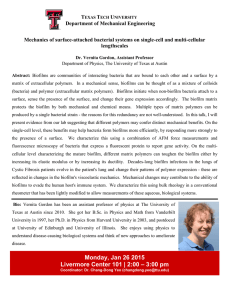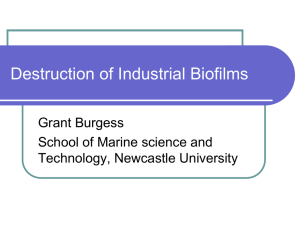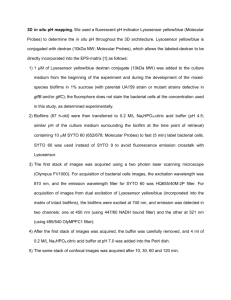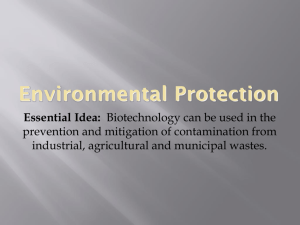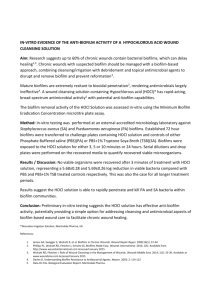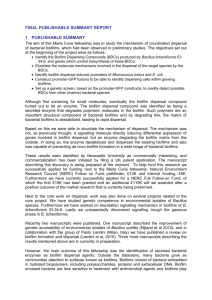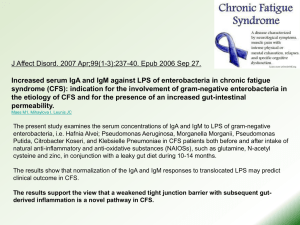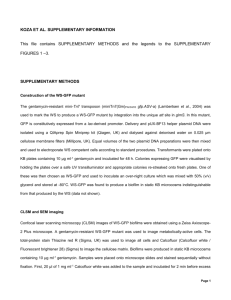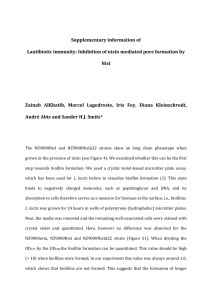Biofilms and Water Quality- are they getting importance in modern
advertisement
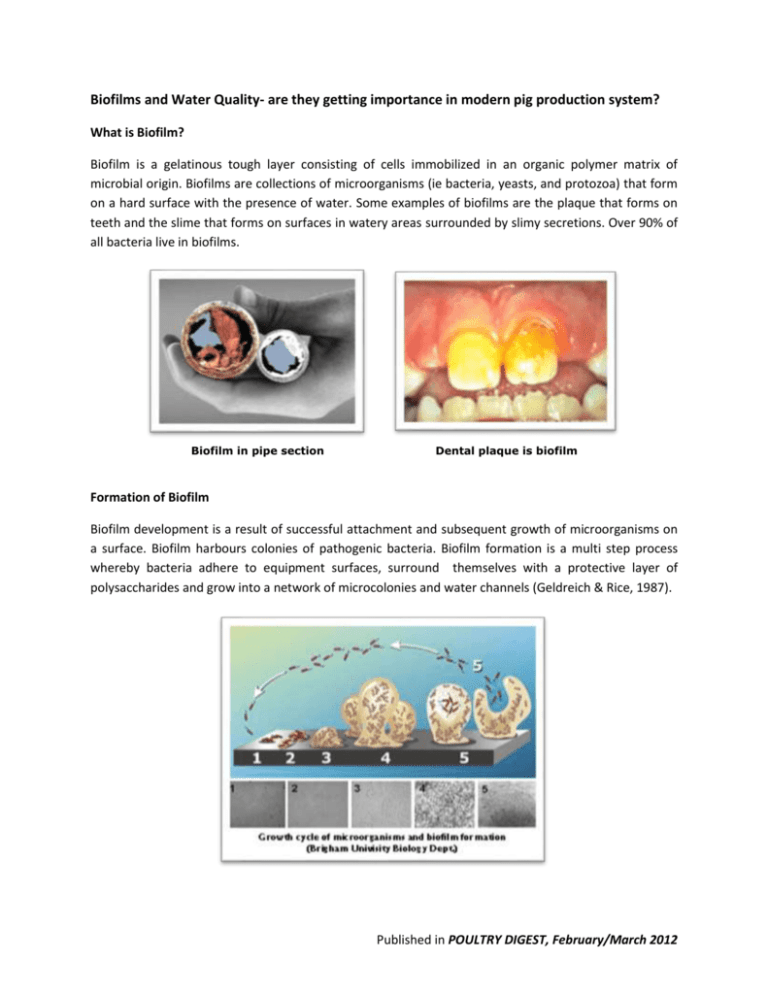
Biofilms and Water Quality- are they getting importance in modern pig production system? What is Biofilm? Biofilm is a gelatinous tough layer consisting of cells immobilized in an organic polymer matrix of microbial origin. Biofilms are collections of microorganisms (ie bacteria, yeasts, and protozoa) that form on a hard surface with the presence of water. Some examples of biofilms are the plaque that forms on teeth and the slime that forms on surfaces in watery areas surrounded by slimy secretions. Over 90% of all bacteria live in biofilms. Biofilm in pipe section Dental plaque is biofilm Formation of Biofilm Biofilm development is a result of successful attachment and subsequent growth of microorganisms on a surface. Biofilm harbours colonies of pathogenic bacteria. Biofilm formation is a multi step process whereby bacteria adhere to equipment surfaces, surround themselves with a protective layer of polysaccharides and grow into a network of microcolonies and water channels (Geldreich & Rice, 1987). Published in POULTRY DIGEST, February/March 2012 Three development phases: 1) the surface is modified by attachment of organic molecules (eg. Glucose, milk, vitamins etc.) 2) reversible attachment of microbes to the organic layer and colonization 3) irreversible attachment and biofilm formation. In a mature biofilm, the cells are organized into columns surrounded by large void spaces that form channels to carry nutrients (O2) deep into the biofilm Thus enclosed watering systems designed to keep birds and animals healthier turn into the sources of delivering pathogen rich water to the system. Detrimental effects of Biofilms Several investigators have shown that the multiplication of microorganisms in biofilms along the distribution systems results in the deterioration of the bacteriological quality of drinking water, the development of odour or colour as well as the acceleration of the phenomenon of corrosion within the pipe network (Nagy & Olson, 1985). The most alarming results of biofilm formation are the presence and multiplication of pathogenic and opportunistic pathogens such as Escherichia coli, Salmonella typhimurium Pseudomonas, Mycobacteria, Campylobacter, Klebesiella, Aeromonas, Legionella spp., Helicobacter pylori and occurring within the biofilms (Engle et al., 1980; Wadowsky et al., 1982; Burke et al., 1984; Mackey et al., 1998) Problems Caused by Biofilms Tend to clog pipes and water filters and nipple drinkers. This can cause the drinkers to leak. Can cause numerous diseases mainly due to the source of E. coli and Salmonella Can form almost anywhere that water is present, including water and liquid feed channels Microorganisms in biofilms express extra resistance to antibiotics (1000 times the dose of antimicrobials required) Extra cost for maintenance and cleaning Control and prevention of Biofilms By preventing the initial adhesion of bacteria but practically very difficult By decreasing humidity, reducing leaks from pipes and improving poor drainage would be of significant controls. By allowing the surface to dry on which the biofilm is formed. This is effective but difficult to perform. By sensitising biofilm bound bacteria to existing antibiotics but in most cases it is hard to perform and costly process, as well. There is no antibiotic that can penetrate the layer. Published in POULTRY DIGEST, February/March 2012 By removing biofilms once they have formed. This is difficult to achieve but is the only current practical approach in pig housing. By proper cleaning and disinfection by Chlorine, Hydrogen Peroxide etc. But Chlorine has limited use due to inherent odour and negative effects on live vaccine and medications. Hydrogen peroxide (H2O2) will effectively remove the biofilm, but is very unstable. Control and prevention can be achieved successfully once the system is cleared of biofilms by frequent and routine sanitation of the system with organic acids. Sources: http://www.biofilmsonline.com AHMAD et al. / J. Agri. Soc. Sci., Vol. 4, No. 2, 2008. Biofilm Formation and Drinking Water Quality in Relation to Escherichia coli at Commercial Poultry Farms: Lehtola, M.J., T. Juhna and I.T. Miettinen, 2004. Formation of biofilms in drinking water distribution networks, a case study in two cities in Finland and Latvia. J. Ind. Microbiol. Biotechnol., 31: 489–94 Mackay, W.G., L.T. Gribbon, M.R. Barer and D.C. Reid, 1998. Biofilms in drinking water systems – A possible reservoir for Helicobacter pylory. Water Sci. Technol., 38: 181–5 Published in POULTRY DIGEST, February/March 2012
